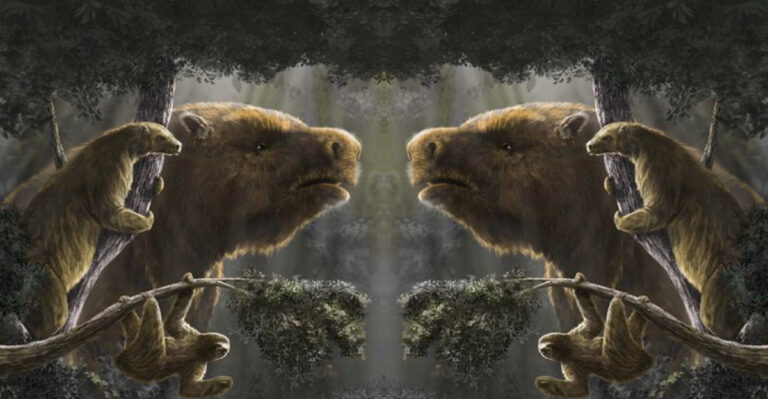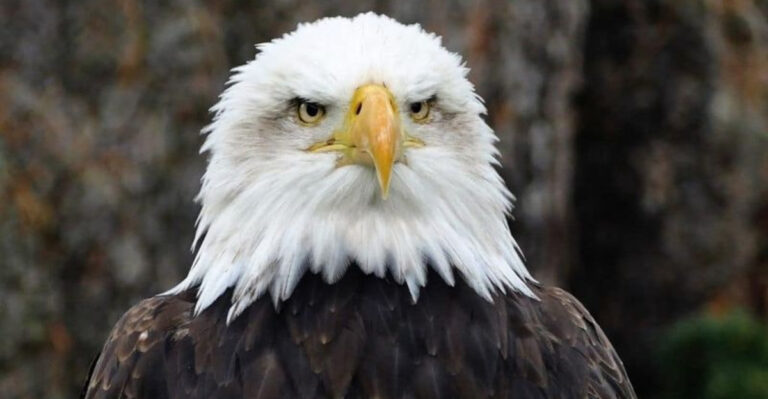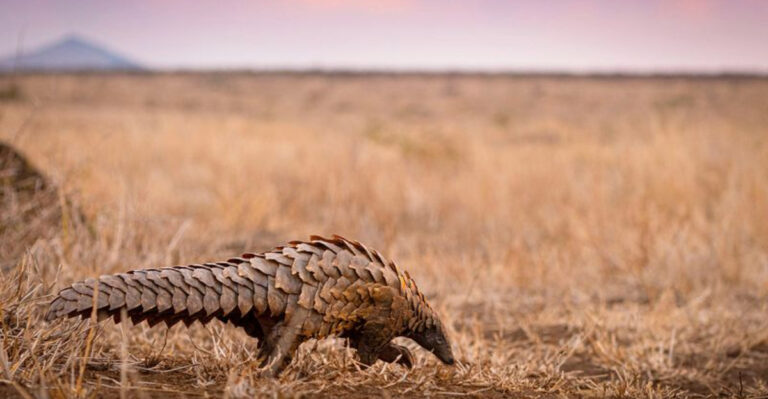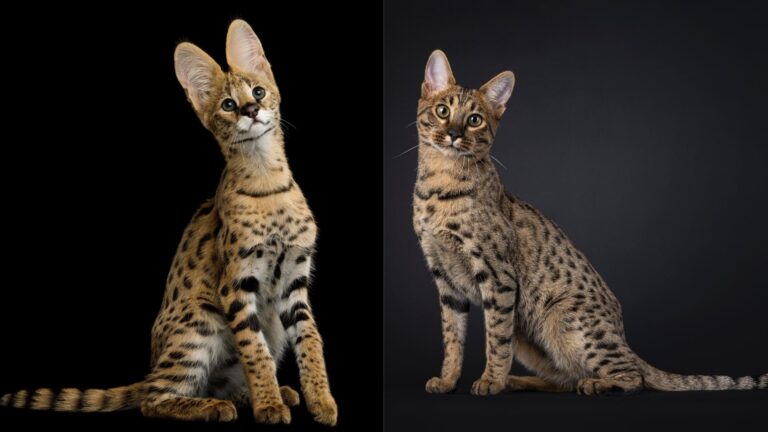19 Birds With White Heads And How To Identify Each
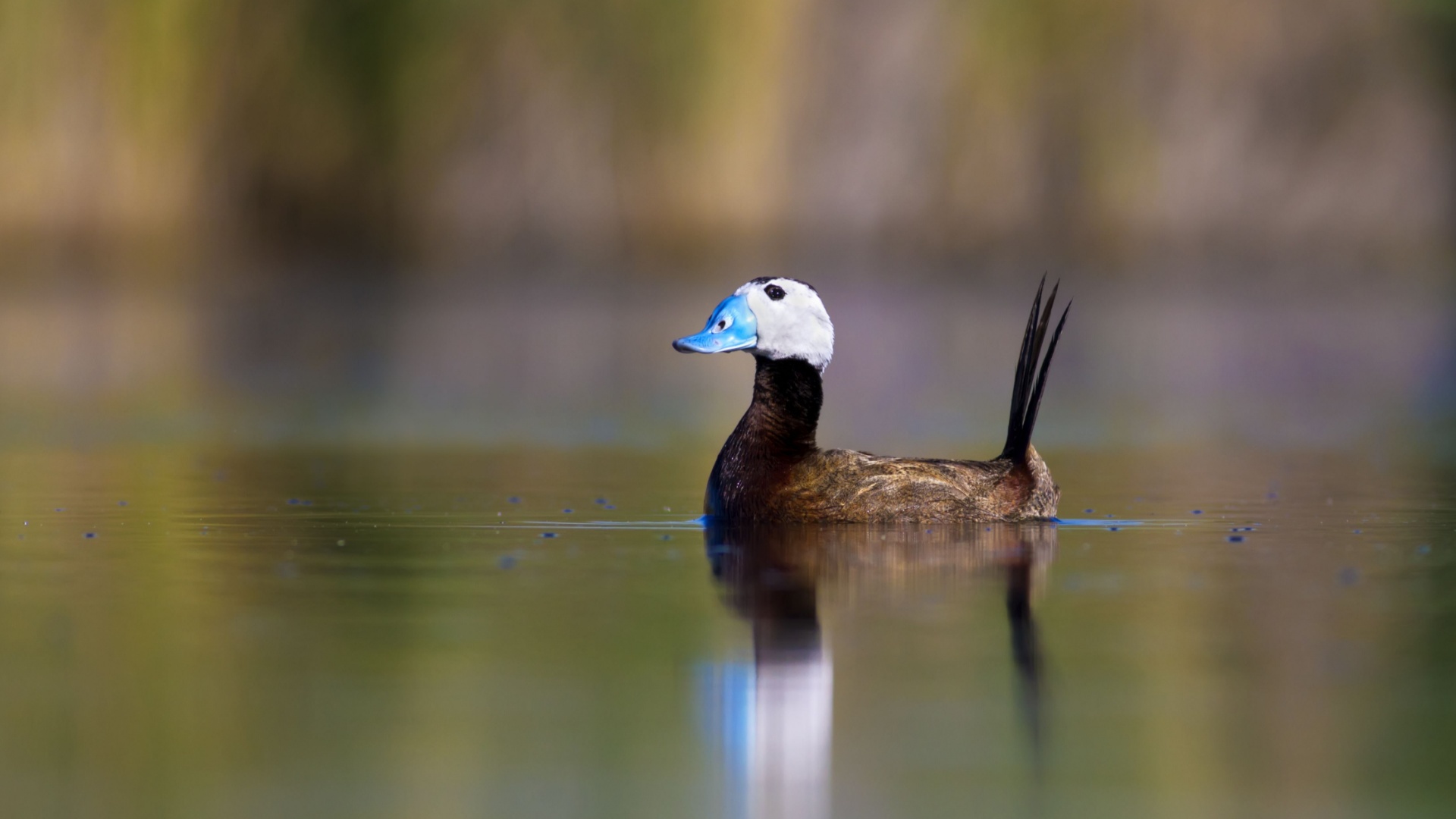
Ever spotted a bird with a striking white head and wondered what species it might be? From the regal bald eagle soaring overhead to striking ducks, these feathered beauties stand out in the wild.
But telling them apart can be tricky – some are fierce hunters, while others are gentle gliders or chirpy companions.
Whether you’re a birdwatching pro or just love spotting unique wildlife, this guide will help you identify these stunning white-headed birds with ease!
1. Bald Eagle
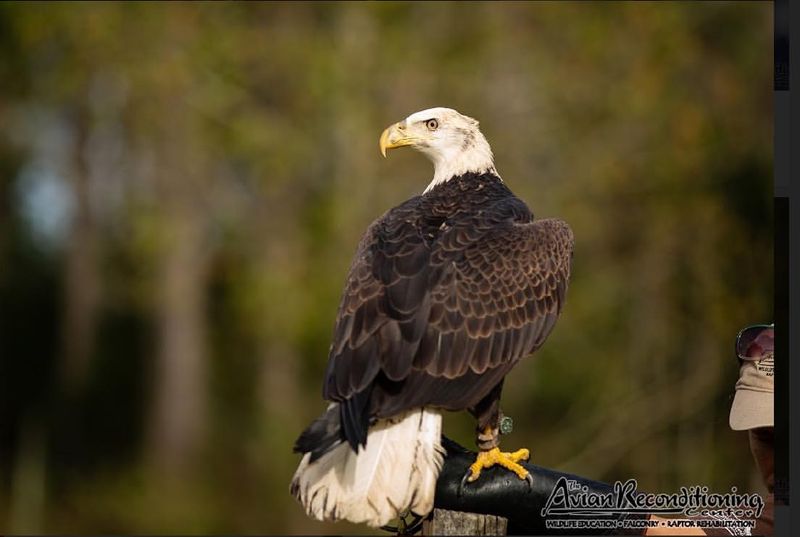
The bald eagle is a symbol of strength and freedom, renowned for its striking white head contrasting with its dark brown body and impressive wingspan. Look for this majestic bird near large bodies of open water. With a wingspan reaching up to 8 feet, they are hard to miss when soaring through the sky. Despite its name, the bald eagle isn’t bald; its name derives from an older meaning of “white-headed.”
Found mostly in North America, these raptors are often seen perched high in trees, keeping a vigilant watch for fish. When identifying a bald eagle, pay attention to its sharp, hooked yellow beak and piercing eyes. Their distinctive screech is another giveaway.
Unlike their fictitious depictions in movies, their real calls are a bit less dramatic. Spotting one is a majestic experience, and knowing the details ensures you won’t mistake it for any other bird.
2. Snowy Owl
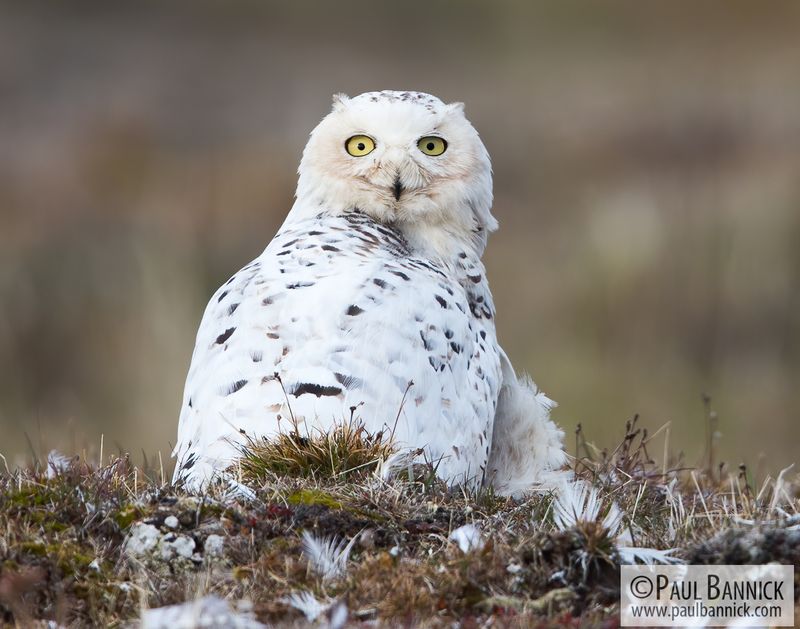
Known for their piercing yellow eyes, these owls are native to the Arctic regions, often venturing further south during the winter months. Their dense, fluffy plumage keeps them warm in the coldest climates, and their silent flight is a marvel of nature.
When identifying a snowy owl, look for their rounded head and lack of ear tufts, which sets them apart from other owl species. Male snowy owls tend to be whiter than females, who have more dark barring on their feathers.
These owls thrive in open landscapes, hunting during daylight hours, which makes them unique among owls. Their presence is a magical sight, reminiscent of a winter wonderland.
3. White-Headed Woodpecker
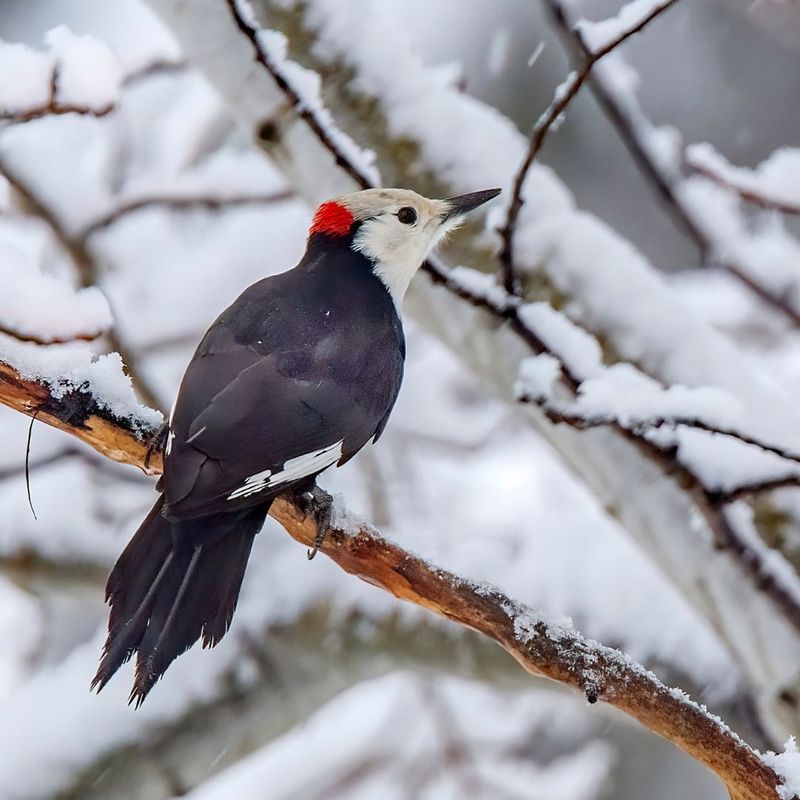
The white-headed woodpecker is a striking bird with its bold white head and contrasting black body. Found primarily in the pine forests of western North America, this woodpecker is a delight to spot for nature lovers.
Unlike most woodpeckers, it lacks the typical red markings on its head, making identification easier. They prefer to feed on the seeds of pine cones and insects found under the bark. When trying to spot a white-headed woodpecker, listen for their rhythmic pecking, a tell-tale sign of their presence.
They are often seen clinging to tree trunks, using their strong beaks to drill into wood. With their unique appearance and behavior, they are a treasured find for birdwatchers in their natural habitat.
4. White-Tailed Kite
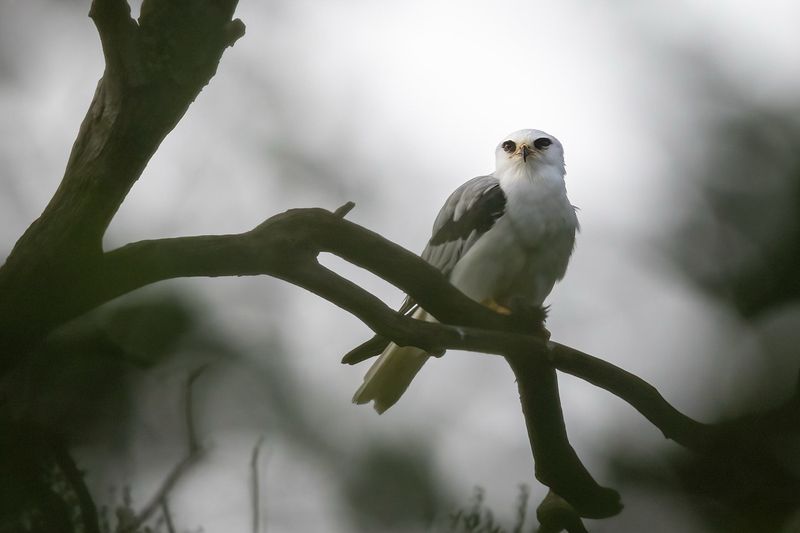
With a graceful flight and a head as white as clouds, the white-tailed kite is truly mesmerizing. These birds of prey are known for their remarkable ability to hover midair while scanning for food, frequently seen in open grasslands and savannas.
Their bright white head, accented by bold black markings on their wings, makes them instantly recognizable. Watching a white-tailed kite in action is breathtaking, from its piercing red eyes to its long, pointed wings gliding effortlessly.
Often spotted soaring high before making a sudden dive to snatch prey, these elegant hunters put on a spectacular aerial display, like a ballet in the sky.
5. American White Pelican
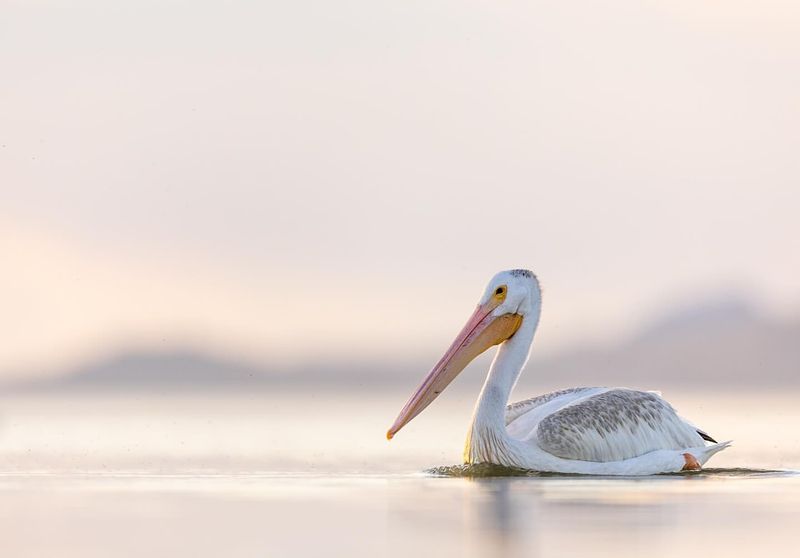
Distinguished by their massive size and striking white plumage, the American white pelican is a marvel both in the air and on water surfaces. With a wingspan that can exceed 9 feet, they are among the largest birds in North America.
Their white heads and large, orange bills are unmistakable signs to identify them. These pelicans are often found in large flocks, gracefully maneuvering in synchronized formations during flight. Inhabitants of inland lakes and coastal regions, they feed primarily on fish. Instead of diving like their brown relatives, they scoop their prey while swimming.
Observing these pelicans, with their majestic flight and cooperative fishing techniques, is a treat for any nature enthusiast.
6. White-Crowned Sparrow
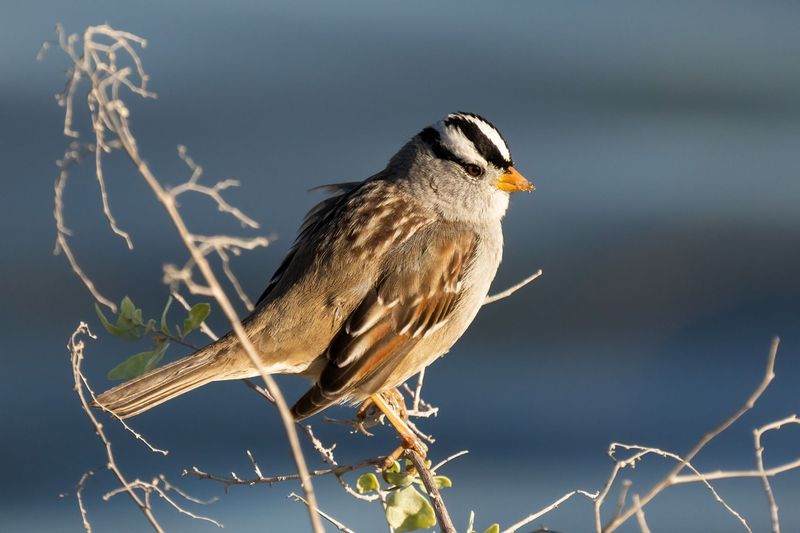
The white-crowned sparrow is a small but striking bird, known for its distinctive head pattern. The alternating black and white stripes on its head set it apart from other sparrows, making identification a breeze.
These birds are found across North America, from the tundra to the southern deserts during winter migrations. Their clear, whistled song is a delightful sound in gardens and woodlands alike. To identify a white-crowned sparrow, look for their bright white crown stripe and pale pink or yellowish bill. They often forage on the ground, searching for seeds and insects.
This sparrow’s charming appearance and melodious song make it a favorite among bird enthusiasts.
7. Ivory Gull
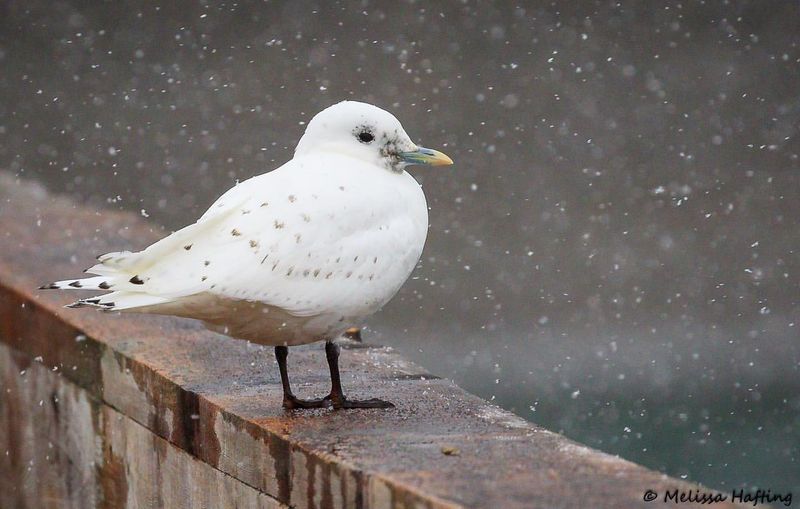
Perfectly adapted to its Arctic home, this exquisite bird is cloaked in pure white feathers, allowing it to blend seamlessly with the icy landscape. Often found near sea ice, the ivory gull thrives as a scavenger, frequently seen around seals and other sea mammals.
Its all-white plumage, contrasted by small black eyes, creates a striking image against the deep blue sea. A short, stubby bill and black legs add to its distinct appearance, making it an unforgettable sight.
Though typically residing in remote regions, the ivory gull occasionally ventures south in the winter, making any encounter a rare and treasured experience for birdwatchers.
8. Little Egret
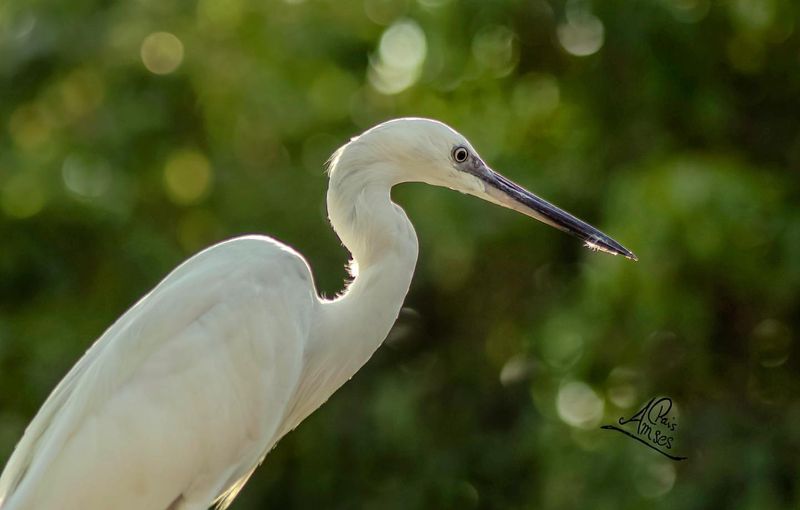
With their elegant stature and gleaming white plumage, little egrets are a picture of grace and poise. These wading birds are commonly found in wetlands across Europe, Africa, and Asia. Their slender neck, adorned with long, flowing feathers during the breeding season, is a distinctive feature.
They delicately maneuver through shallow waters, hunting fish and small aquatic creatures. Identifying a little egret involves noting their black legs and yellow feet, which contrast sharply with their white head and body.
Their agile movements and the spectacle of their courtship dances make them a delight to observe in their natural habitat.
9. Northern Gannet
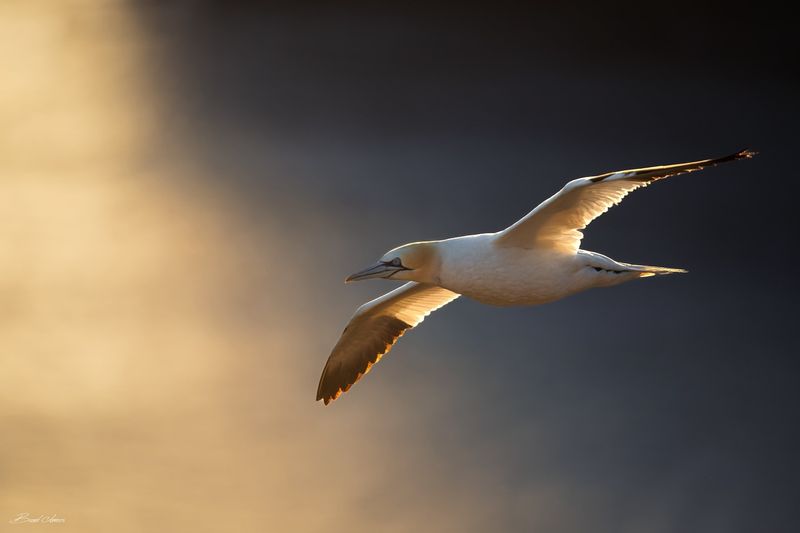
The northern gannet is a master of the sea, renowned for its spectacular diving skills. With a head and body dressed in white, these birds are often seen plunging from great heights to catch fish.
Found along the coasts of the North Atlantic, their sharp, pointed bills and blue-rimmed eyes are key features for identification. During breeding season, their heads take on a golden hue, adding to their striking appearance.
When observing northern gannets, look for their long wingspan and streamlined bodies, perfect for swift dives.
Watching these birds in action is akin to witnessing a natural work of art, as they execute each dive with precision.
10. Ross’s Goose
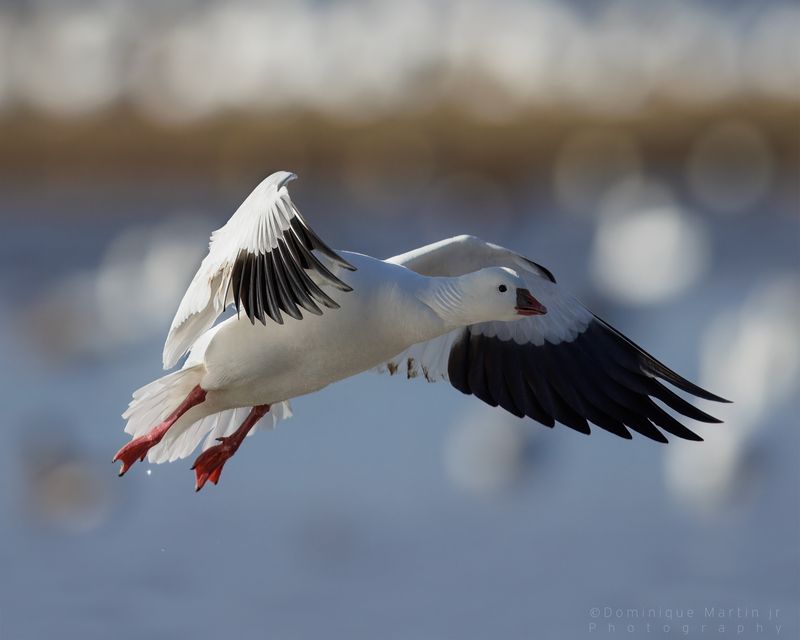
A delightful sight, especially in large flocks, this small, elegant goose stands out with its pure white plumage and petite stature. Smaller than the more common snow goose, Ross’s goose is easily recognized by its bright white head and short, stubby bill.
Found mainly in North America’s central flyways, these geese migrate between Arctic breeding grounds and southern wintering areas. Their distinctive “grinning patch” on the bill sets them apart from other geese, making them a unique find.
Watching Ross’s goose interact socially and listening to their melodic calls adds to the charm of spotting these gregarious birds in the wild.
11. White-Headed Vulture
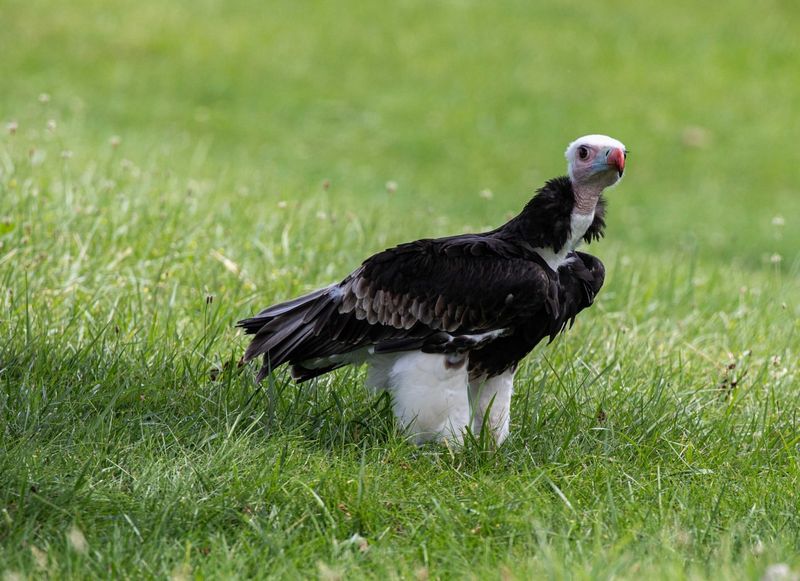
The white-headed vulture is a striking bird of prey, found in the savannas and open woodlands of Africa. With its stark white head standing out against a dark body and wings, it is a unique and captivating sight.
This vulture is known for its solitary behavior, often found alone or in pairs rather than large groups. Their powerful beaks are well-suited for tearing into carrion, and they play a crucial role in the ecosystem by cleaning up after other predators.
Identifying a white-headed vulture involves noting their large size, distinctive head coloration, and hooked beak. Despite their somewhat grim diet, these vultures are an integral part of nature’s cleanup crew, diligently maintaining the balance of life.
12. Whooping Crane
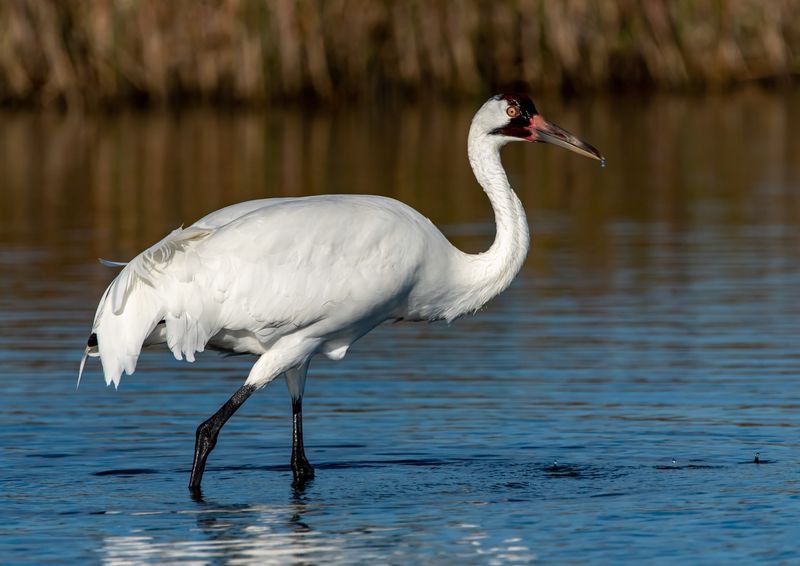
The whooping crane is a conservation success story, known for its extraordinary height and elegant appearance. With a white head and body, these cranes are among the tallest birds in North America.
Their red crown and black facial markings are key identification features. Found in marshes and wetlands, they are often involved in elaborate courtship dances, which are a sight to behold.
Their loud, trumpeting call echoes across their habitat, adding to their majestic presence. Observing these cranes is a reminder of the importance of conservation efforts in preserving such magnificent creatures.
13. White-Headed Duck
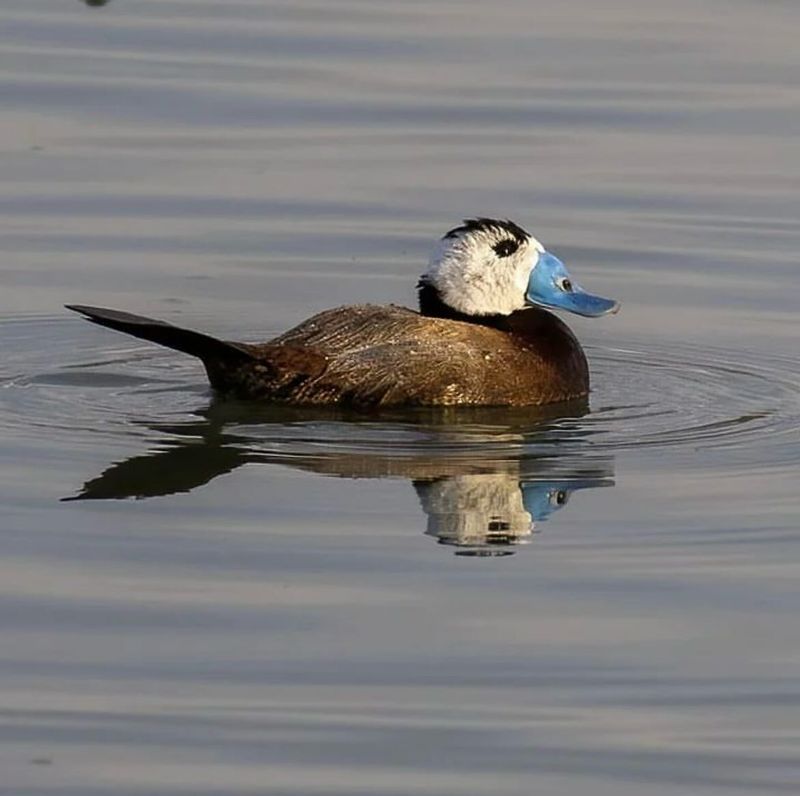
A charming resident of lakes and marshes, this distinctive duck is easily recognized by its bright white head and vibrant blue bill. Often found in southern Europe and western Asia, the white-headed duck prefers freshwater habitats where it skillfully dives for aquatic plants and insects.
Males are especially striking during the breeding season, their vivid blue bills standing out against their pale heads. Their compact size and unique coloration set them apart from other waterfowl.
Watching a white-headed duck in its natural environment offers a delightful glimpse into its fascinating adaptations and behaviors.
14. Siberian Crane
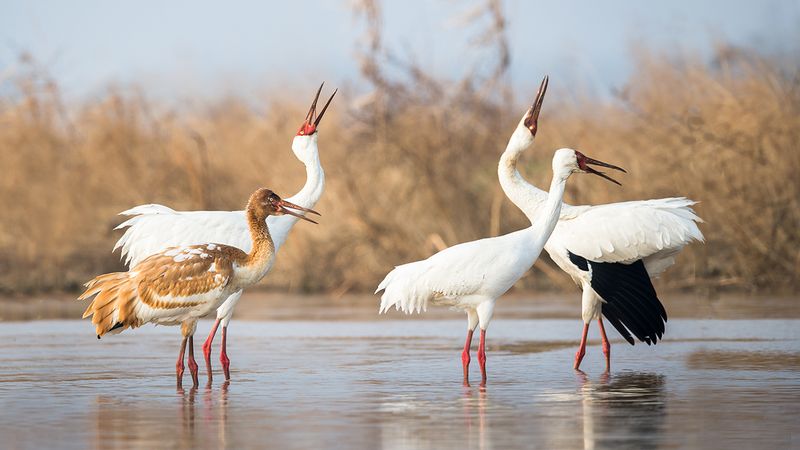
The Siberian crane is a majestic bird, known for its long migrations and pure white plumage. Found primarily in the wetlands of Russia and China, these cranes are a symbol of longevity and fidelity in many cultures.
Their white heads and red face mask make them easy to identify, especially during the breeding season. They often travel great distances between their breeding and wintering grounds, showcasing remarkable endurance.
To spot a Siberian crane, look for their tall, slender build and graceful movements. Their trumpeting calls are a hallmark of their presence.
15. Western Gull
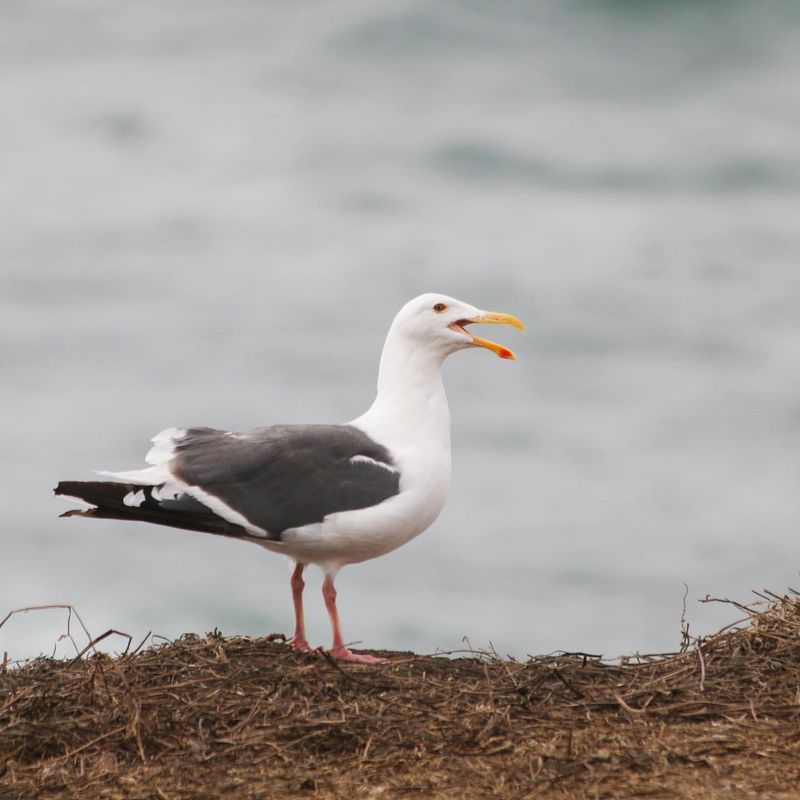
The western gull is a robust seabird, known for its striking white head and commanding presence. Often seen along the Pacific coast, these gulls are a staple of coastal ecosystems.
Their white heads and stout bodies make them easy to identify. With a wingspan reaching up to 4.7 feet, they are formidable flyers and skilled scavengers. To identify a western gull, look for their bright yellow beaks with a distinctive red spot.
Their vocalizations and social behavior add to the dynamic environment of oceanfronts. Observing these gulls in their coastal habitat offers insights into their role in the marine ecosystem.
16. Trumpeter Swan
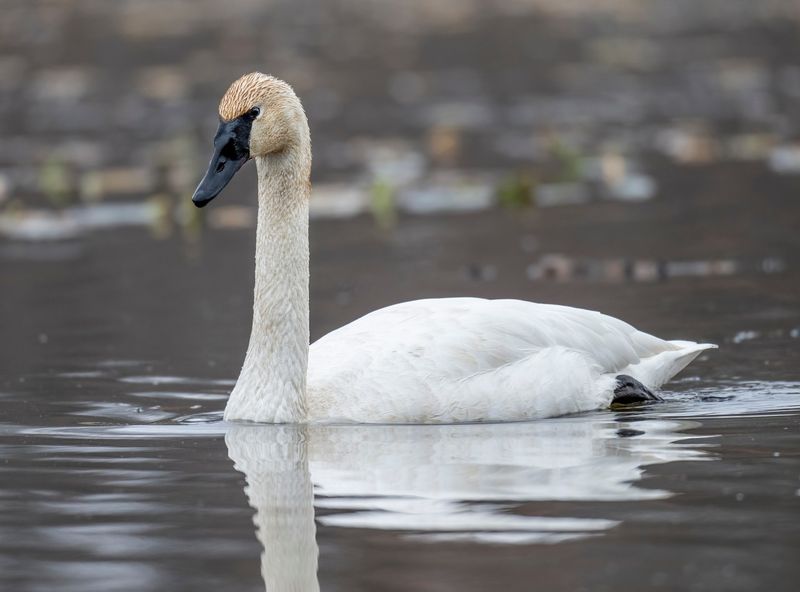
A vision of elegance and grace, this majestic swan is known for its resounding call and pure white plumage. Holding its head high on a long, slender neck, the trumpeter swan is an iconic symbol of natural beauty.
Found in North America’s wetlands, it is the largest of all swan species, boasting a wingspan that can exceed 7 feet. The striking contrast between its white head and black bill makes it unmistakable in the wild. When observing a trumpeter swan, listen for its deep, trumpet-like calls echoing across the water.
Its serene presence and powerful flight create a peaceful yet awe-inspiring spectacle, showcasing the beauty of the natural world.
17. White-Headed Stilt
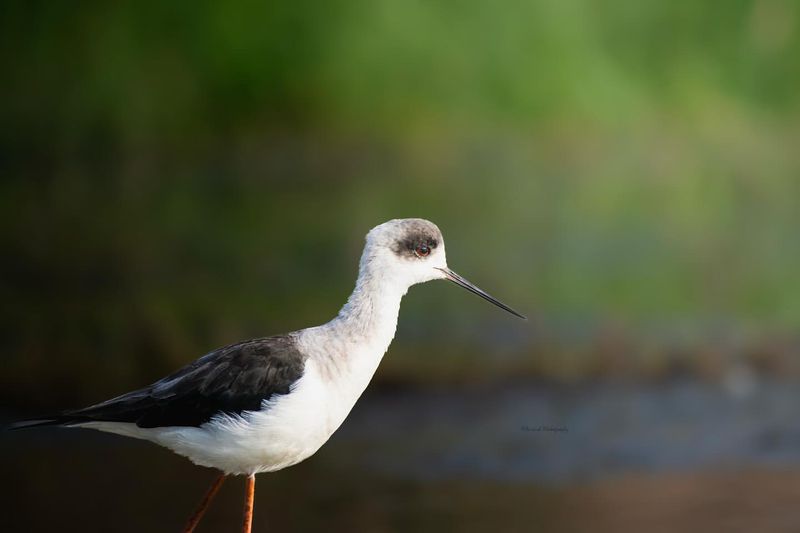
The white-headed stilt is a striking wader, known for its long legs and distinctive white head. Found in wetlands across Australia and New Zealand, these birds are a fascinating study in adaptation. Their slender build and sharp beaks make them adept at catching small aquatic prey.
With their stark white heads and contrasting black wings, identification is straightforward. To spot a white-headed stilt, observe their elegant gait and foraging behavior in shallow waters. Their long, thin legs allow them to navigate wetlands with ease.
Watching these stilts is a delightful experience, offering a window into the intricate workings of wetland ecosystems.
18. Masked Booby
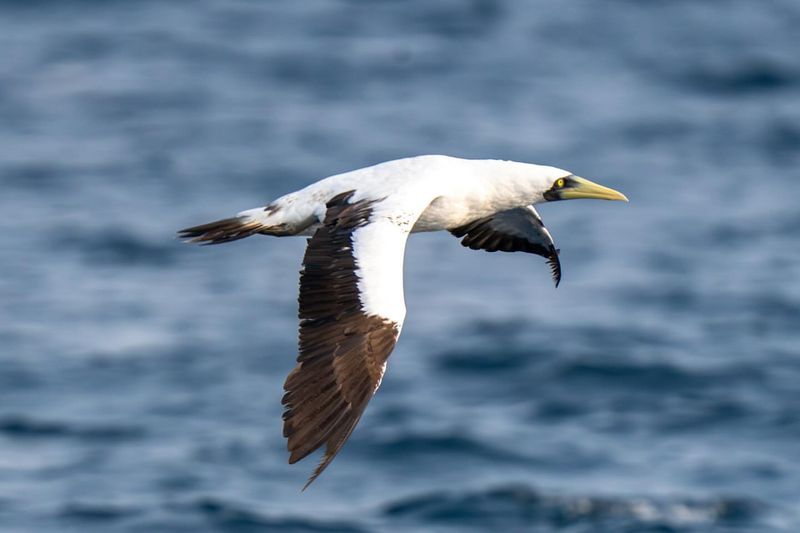
A seabird with a personality as bold as its striking appearance, this daring hunter rules the tropical oceans. With a white head and a distinct black mask, the masked booby is a true daredevil, known for its dramatic plunge dives to catch fish.
Its sharp contrast of white plumage against black markings makes it stand out against the deep blue sea. Long wings and a robust body give this bird a commanding presence in flight. Nesting in bustling colonies on remote islands, masked boobies bring energy and noise to their surroundings.
Watching them in action is an exciting glimpse into the dynamic and fearless life of seabirds.
19. Pied Kingfisher
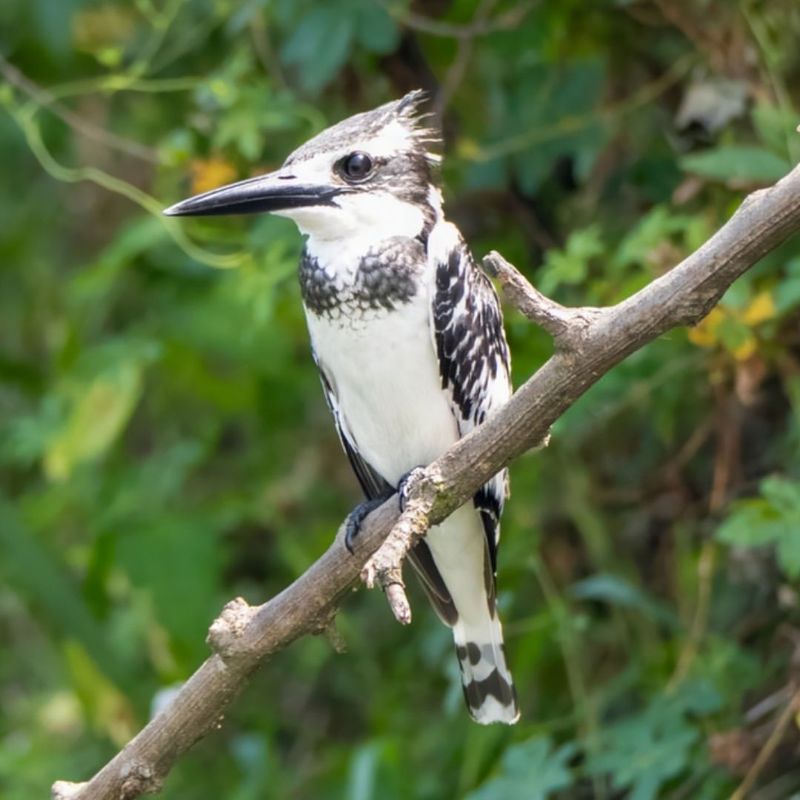
The pied kingfisher is a marvel of nature, known for its remarkable fishing skills and striking plumage. With a white head adorned with black markings, they are a distinctive sight along rivers and lakes. Found across Africa and Asia, these kingfishers are known for their hovering flight as they hunt for fish below.
Their bold black and white coloration varies between males and females, with males having a double band across the chest. Identifying a pied kingfisher is made easier by their unique hunting behavior and vocal calls.
Watching them dive for fish is a thrilling spectacle, highlighting their precision and agility. Observing these birds is an exciting experience, bringing the thrill of the hunt to life.

